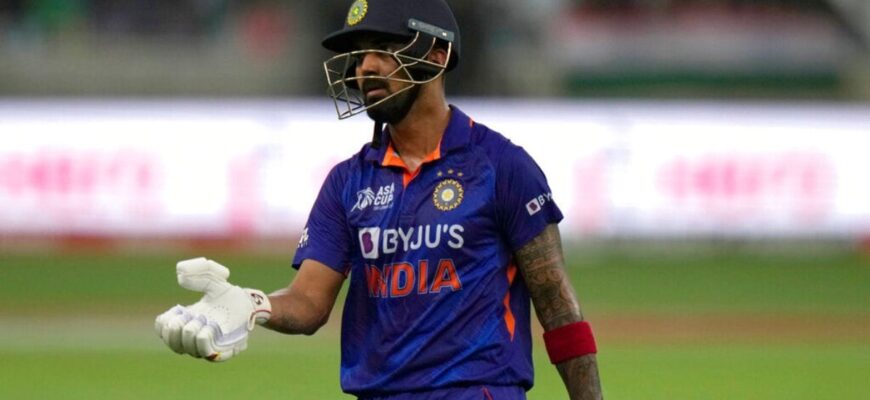The Asia Cup 2025 has been a stage for enthralling cricket, but for Team India, a recent Super Four clash against Bangladesh offered more questions than answers, particularly regarding their batting strategy. What started with a promising flurry of runs quickly devolved into a perplexing sequence of decisions, leaving both fans and former cricketers scratching their heads. The central figure in this tactical drama? Sanju Samson, the prolific T20 batter, who remained conspicuously absent from the crease while wickets tumbled around him.
The Early Promise and the Subsequent Slide
India`s innings began with characteristic aggression. Openers Shubman Gill and Abhishek Sharma laid a formidable foundation, powering the team to 72 without loss in the powerplay and a comfortable 112 for 2 after 11 overs. The stage seemed set for a commanding total. However, what followed was a dramatic deceleration, as India managed a mere 56 runs for the loss of four crucial wickets in the final nine overs, culminating in a total of 168 for 6. The scoreboard told a story of missteps, but the real narrative lay in the dugout.
A Baffling Batting Shuffle
The moment Rishad Hossain claimed Gill`s wicket in the seventh over, the tactical roulette began. Instead of a recognized top-order batter, Shivam Dube, a left-hander often employed as a spin-hitter, strode to the crease at number three. His stay was brief and unproductive, yielding just two runs from three deliveries before he, too, departed. This decision immediately raised eyebrows. As former Indian cricketer Aakash Chopra eloquently put it on ESPNcricinfo`s Time Out, India`s batting order became “inexplicable,” describing the team`s approach as “baffling to say the least.”
The confusion only deepened later in the innings. Even after India had lost five wickets by the 15th over, with a genuine need for a calming presence and big-hitting ability, Sanju Samson was once again overlooked. In his stead, Axar Patel, primarily a bowling all-rounder, was sent out. Varun Aaron, also speaking on Time Out, expressed his “perplexity,” particularly regarding Samson`s continuous omission. “Axar ahead of Samson? I do not understand it,” Aaron remarked, highlighting Samson`s impressive record of three T20I centuries in the previous year.
The `Match-Up` Conundrum
Post-match, Suryakumar Yadav offered an explanation for Dube`s surprising promotion. The rationale revolved around “match-ups” – Dube`s perceived suitability against Bangladesh`s left-arm spinner Nasum Ahmed and leg-spinner Rishad Hossain. “Dube was a perfect match-up at that moment,” Suryakumar stated, “and his entry point was perfect – seven to 15 overs.”
While modern T20 cricket increasingly relies on strategic “match-ups,” the execution in this instance drew heavy criticism. Dube`s recent form against spin has been on a downward trend, with his strike rate against spin dropping significantly from 166.1 to 121.8 since April 2024. Chopra questioned the timing: “Can you actually take a bowler down and throw him out of the attack in the seventh over?” He argued that Dube`s role as a spin-hitter would be far more impactful in the death overs, when bowlers are under greater pressure and have fewer options.
Flexibility or Fluster?
India`s batting coach, Sitanshu Kotak, had previously emphasized the team`s flexible approach, stating that “everyone is prepared to bat at any number” to maintain left-right combinations. This philosophy, while innovative in theory, appeared to falter under pressure. When the chosen “match-ups” fail, and established performers like Samson are sidelined, the line between strategic flexibility and tactical disarray blurs significantly.
The continuous chopping and changing, particularly when not yielding desired results, can undermine player confidence and team stability. As Aaron pointed out, India`s batters generally possess high strike rates. The argument for constant reordering, especially at the expense of proven talent, becomes harder to justify.
Looking Ahead: A Strategic Reassessment?
This Asia Cup encounter serves as a crucial case study for Team India. In the fast-paced, high-stakes world of T20 cricket, innovation is key, but it must be balanced with common sense and a clear understanding of player form and match situations. Was the decision to hold back Sanju Samson a calculated risk that backfired, or an overthinking of tactics that ignored the obvious? Only time, and perhaps a more consistent application of their batting resources, will tell if India can master the delicate art of T20 strategy before their next major challenge. The cricketing world, it seems, will be watching closely for their next move, hoping for clarity where once there was only confusion.







